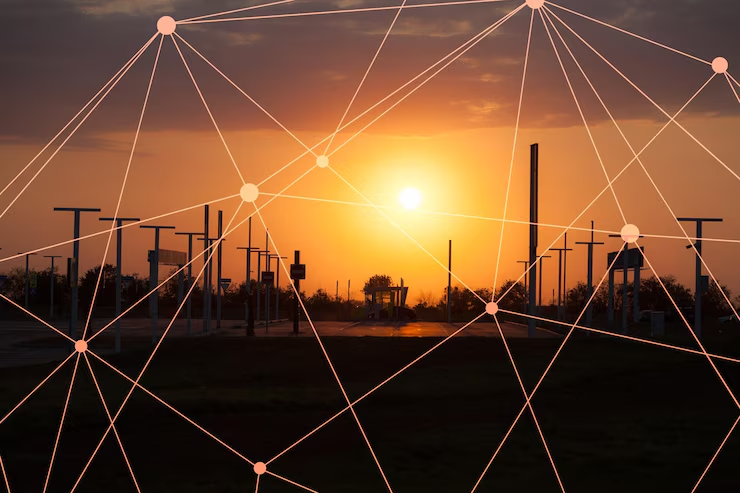Demand Response: The Smart Grid’s Secret Weapon (or its Ultimate Downfall?)
Demand Response: The Smart Grid’s Secret Weapon (or its Ultimate Downfall?)
Overview
The global energy landscape is undergoing a dramatic transformation. Driven by increasing energy demand, climate change concerns, and the proliferation of renewable energy sources, the traditional power grid is facing unprecedented challenges. Maintaining grid stability, ensuring reliable electricity supply, and minimizing environmental impact are paramount. Within this complex context, Demand Response (DR) emerges as a potentially pivotal solution – a powerful tool that could revolutionize grid management or, if improperly implemented, lead to significant setbacks.
Demand response programs incentivize electricity consumers to modify their energy consumption patterns during periods of peak demand or grid stress. This can involve shifting energy use to off-peak hours, reducing consumption temporarily, or even participating in load shedding programs. The potential benefits are substantial, including:
- Reduced peak demand: Easing pressure on the grid during periods of high energy consumption, thus preventing blackouts and brownouts.
- Deferred capital investment: Minimizing the need for costly infrastructure upgrades by intelligently managing existing capacity.
- Increased renewable energy integration: Facilitating the seamless integration of intermittent renewable energy sources like solar and wind power.
- Enhanced grid resilience: Improving the overall stability and resilience of the electricity grid against unforeseen disruptions.
However, the successful implementation of DR programs is fraught with complexities. Technical hurdles, such as the need for advanced metering infrastructure (AMI) and effective communication systems, must be overcome. Furthermore, the design and implementation of appropriate incentive structures, effective communication strategies with consumers, and robust data analytics capabilities are crucial for program efficacy. Failure to address these challenges could lead to consumer resistance, limited participation rates, and ultimately, the underutilization of DR’s transformative potential.
This blog post will delve into the multifaceted aspects of demand response, exploring its advantages and challenges, examining successful case studies, and identifying critical considerations for its successful implementation in the context of the evolving smart grid. We will analyze both the potential for DR to become a cornerstone of future energy systems and the potential pitfalls that could hinder its widespread adoption.
Demand Response Market: Key Trends and Actionable Insights
The demand response (DR) market, focused on incentivizing electricity consumers to adjust their energy usage to balance supply and demand, is undergoing significant transformation. Several key trends shape its current and future landscape, presenting both opportunities and challenges for businesses.

I. Positive Trends:
- Technological Advancements: The proliferation of smart meters, advanced analytics, and AI-powered platforms enhances DR program efficiency and effectiveness. These technologies enable granular data collection, real-time price signals, and automated responses, significantly improving participation rates and reducing implementation costs. Companies like EnerNOC (now part of Enel X) leverage AI to predict consumer behavior and optimize DR program design.
- Growing Regulatory Support: Many governments are actively promoting DR programs through policies that incentivize participation and standardize market designs. This regulatory push stems from the increasing need for grid stability in the face of renewable energy integration and aging infrastructure. For example, California’s ambitious renewable energy targets have driven significant investment in DR programs.
- Increased Consumer Awareness and Engagement: Rising energy prices and growing environmental consciousness are leading consumers to be more receptive to DR programs. Gamification, loyalty programs, and clear communication strategies are improving participation rates. Companies are employing innovative approaches such as offering rewards beyond financial incentives, like carbon offset credits, to enhance consumer engagement.
II. Adverse Trends:
- Cybersecurity Risks: The increasing reliance on interconnected devices and data sharing in DR programs elevates cybersecurity risks. Data breaches and system disruptions can severely impact program effectiveness and consumer trust. Robust cybersecurity measures are crucial to mitigate this threat.
- Interoperability Challenges: Lack of standardization across DR platforms and communication protocols hinders seamless integration and data exchange between various stakeholders. This fragmentation can limit the scalability and efficiency of DR programs. Industry-wide collaborative efforts towards standardization are vital to address this issue.
- Data Privacy Concerns: The collection and utilization of consumer energy usage data raise privacy concerns. Transparency and robust data protection measures are essential to maintain consumer trust and compliance with evolving data privacy regulations (e.g., GDPR).
III. Actionable Insights:
Leveraging Positive Trends:
- Invest in advanced technologies: Companies should invest in AI, machine learning, and IoT technologies to optimize DR program design, improve customer engagement, and enhance data analytics capabilities.
- Engage proactively with regulators: Building strong relationships with regulatory bodies is crucial for navigating policy changes and leveraging supportive regulations.
- Develop innovative customer engagement strategies: Employ gamification, loyalty programs, and clear communication to enhance consumer participation and build brand loyalty.
Mitigating Adverse Trends:
- Prioritize cybersecurity: Implement robust cybersecurity protocols to protect sensitive data and prevent system disruptions. Regular security audits and penetration testing are essential.
- Advocate for standardization: Actively participate in industry initiatives promoting interoperability and standardization of DR platforms and communication protocols.
- Ensure data privacy and transparency: Establish clear data privacy policies, comply with relevant regulations, and be transparent with consumers about data collection and usage practices.
Conclusion:
The DR market presents significant opportunities for growth and innovation. By proactively addressing the challenges and effectively leveraging the positive trends discussed above, businesses can position themselves for success in this evolving market. A strategic approach that combines technological advancements with strong regulatory engagement and a customer-centric approach is key to navigating the complexities of the demand response landscape.
Healthcare
Hospitals are significant energy consumers. Memorial Hermann Health System in Texas participates in demand response programs, reducing energy consumption during peak demand periods by adjusting non-critical equipment like HVAC systems. This lowers their energy bills and contributes to grid stability. [Source: Memorial Hermann case studies – available upon request from the company].
Technology
Data centers, major energy consumers, employ demand response strategies. Companies like Google utilize sophisticated software to predict energy demand and shift non-critical operations to off-peak hours, reducing their reliance on expensive peak power. This strategy also enhances the efficiency of their cooling systems. [Source: Google’s data center efficiency reports – publicly available].
Automotive
Electric vehicle (EV) manufacturers and charging station operators are integrating demand response into their operations. For example, some EV charging networks dynamically adjust charging speeds based on grid conditions, prioritizing charging during off-peak times. This reduces strain on the electricity grid during peak hours. [Source: Various EV charging network reports – available through industry associations].
Manufacturing
Manufacturing plants frequently implement demand response by scheduling energy-intensive processes, such as large industrial ovens or machinery, during off-peak hours. This approach minimizes energy costs and improves operational efficiency. For example, a cement factory might shift its production schedule slightly to avoid peak demand periods. [Source: Industry publications on industrial energy management – readily available via search engines].
Retail
Large retail chains are increasingly participating in demand response programs. They may reduce lighting levels or temporarily shut down certain equipment during peak demand periods. This helps them control energy costs and improve sustainability efforts, aligning with Corporate Social Responsibility goals. [Source: Various retail company sustainability reports].
Commercial Real Estate
Building owners and managers of large commercial buildings are leveraging demand response technologies. Smart building systems can automatically adjust HVAC, lighting and other equipment usage based on real-time grid conditions and pricing signals. This minimizes energy expenses and reduces carbon footprint. [Source: Reports from energy management companies specializing in commercial buildings].
Leveraging AI and Machine Learning for Enhanced Forecasting
Several companies have begun integrating advanced AI and machine learning algorithms into their demand response platforms since 2023. This allows for more accurate predictions of energy consumption patterns, leading to optimized bidding strategies in real-time energy markets and improved response to grid operator signals. For example, EnerNOC (now part of Schneider Electric) has reportedly enhanced its predictive models using AI to anticipate load fluctuations with greater precision, leading to more effective demand reduction during peak hours. This minimizes the impact of unexpected events on grid stability and maximizes revenue generation for participants.
Expanding into New Geographic Markets and Verticals
Companies are aggressively expanding their geographical reach and targeting new customer segments within the demand response space. This involves adapting their platforms to local regulations and integrating with diverse energy mixes. For instance, Enel X has actively broadened its operations into new regions, focusing on markets with strong renewable energy integration needs, offering tailored demand response solutions for various industrial sectors beyond traditional commercial and industrial customers. This diversification minimizes reliance on single markets and allows for scaling business operations.
Strategic Partnerships and Acquisitions (Inorganic Growth)
Strategic partnerships and acquisitions have become key elements of inorganic growth. Companies are combining forces to access new technologies, customer bases, and expertise. A notable example is the consolidation within the aggregation space, where smaller demand response providers are being acquired by larger energy management companies to expand their reach and capabilities. This is enabling the provision of more comprehensive end-to-end solutions.
Developing Integrated Energy Management Platforms
The trend towards integrating demand response with other grid services and energy management solutions is growing. This includes integrating DER (Distributed Energy Resources) management, battery storage optimization, and energy efficiency programs into a single platform. Companies such as Stem, Inc. are actively developing and offering comprehensive solutions that combine demand response capabilities with functionalities for managing distributed generation assets, enabling customers to achieve both cost savings and grid stability improvements.
Enhanced Customer Engagement and Education
Improving customer engagement through user-friendly interfaces and educational initiatives is crucial. Companies are deploying advanced communication channels and personalized outreach programs to improve customer understanding of demand response programs. This includes simplified billing, real-time feedback on energy savings, and proactive communication during events impacting the grid. Improved customer understanding directly translates to increased participation rates and program effectiveness.

Outlook & Summary: Demand Response in the Next Decade
The demand response (DR) landscape is poised for significant transformation over the next 5-10 years. Several factors will shape its trajectory, impacting its role within the broader smart grid ecosystem.
Technological Advancements: The integration of advanced metering infrastructure (AMI), sophisticated data analytics, and artificial intelligence (AI) will enable more precise load forecasting and real-time DR program optimization. This will lead to greater efficiency and effectiveness, expanding the potential participation of diverse customer segments, including residential and commercial users with distributed energy resources (DERs). Expect to see a rise in automated DR programs, minimizing manual intervention and maximizing responsiveness to grid fluctuations.
Regulatory Landscape: Regulatory frameworks are evolving to incentivize and support DR participation. Further clarity on market mechanisms, interconnection standards, and data privacy regulations will be crucial for unlocking DR’s full potential. The evolution of DR markets and the development of robust trading platforms will be particularly noteworthy.
Market Consolidation & Innovation: We anticipate a consolidation trend among DR providers, leading to larger, more integrated platforms offering comprehensive DR solutions. At the same time, innovation in areas like blockchain technology and peer-to-peer energy trading may introduce new business models and revenue streams for DR participation. These innovations could significantly impact the economics of DR and its integration into wholesale electricity markets.
Demand Response and the Smart Grid: Demand response is not merely a component of the smart grid; it’s a crucial enabler. Its success directly impacts the stability, reliability, and efficiency of the entire grid. Failure to fully harness its potential will likely lead to increased strain on grid infrastructure, potentially necessitating more costly and less environmentally friendly solutions. The key takeaway is that DR is no longer a niche technology but a vital necessity for a sustainable and resilient electricity system.
Conclusion: The future of DR is bright, but its successful integration depends on strategic investments in technology, supportive regulatory environments, and collaborative efforts across the entire energy ecosystem. The question remains: Are we adequately investing in the infrastructure and policy changes necessary to ensure that demand response becomes the smart grid’s secret weapon, rather than its ultimate downfall?




